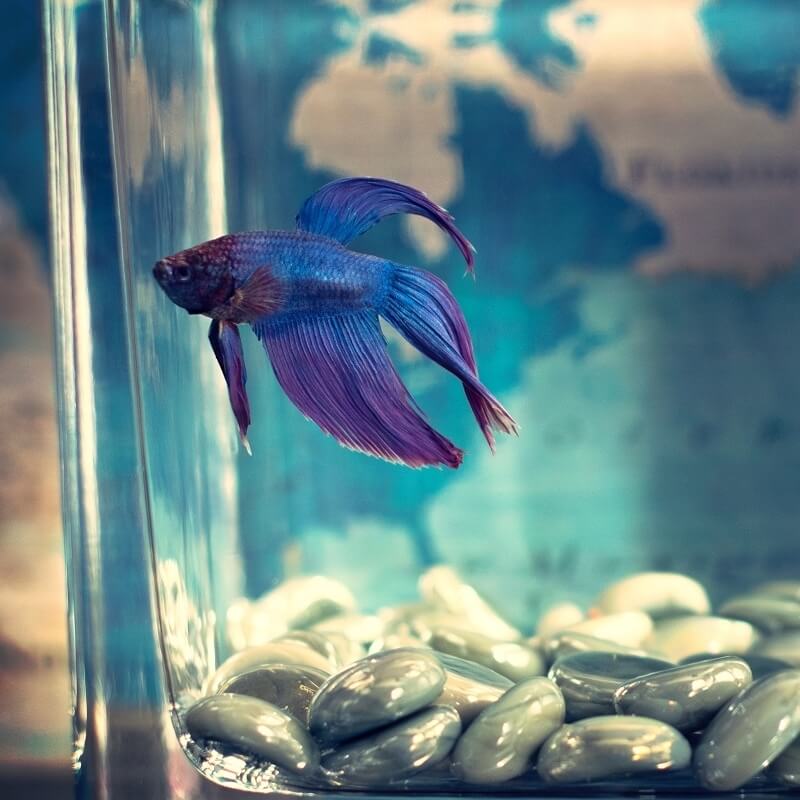How to Build an Acrylic Aquarium

Taking on the challenge of constructing your own acrylic aquarium can be a gratifying, cost-effective, and fun venture. It allows you the ability to create something unique and special for you and your fish pals. We have taken the time to research the steps it takes in accomplishing such a task. Below is a general guide to help you with your next DIY project of building your own fish aquarium tank.
What Material Should I Use?
Most fish aquariums can be made out of one of two things, glass, and high-strength acrylic. Glass has many valuable qualities but cast acrylic may be the better material when DIY-ing your own custom fish tank. Acrylic (or plexiglass as it is commonly known) has great optical clarity, is super durable, and is lighter in weight making it the better home for your beloved fish pals. Cast acrylic has 17 times the impact resistance of glass and also has better insulating properties. Fish aquariums made out of acrylic can be 4 times lighter than those made up of glass making it easier to transport your tank around your home. Acrylic is also easier to shape and mold giving you the opportunity to design a more unique looking aquarium so you are not resigned to just a square or rectangle shape. Here is everything you need to know about acrylic.
What Do I Need?
Items needed:
- Acrylic sheets
- Solvent Cement
- Aquarium safe silicone
- Duct tape
If you DIY your own, standard rectangle/square acrylic aquarium you will need a total of 5 sheets of acrylic (6 if you want a lid). It is recommended and common among custom tank builders to go with acrylic no less than ¼”. The thickness and dimensions will vary based on the gallon amount you desire to go with. The square foot price of acrylic will go up the thicker you go so take that into account. It is easier to buy the sheets precut so finding a source that can cut the pieces for you will reduce the chance of error of cutting the acrylic sheets on your own. ShapesPlastics has extensive technical expertise in the custom fabrication of different plastic sheets. Our cut-to-size plastic sheets offer the best quality, precision in cutting, and tight tolerances while saving you time, money, and energy. You will need duct tape, weld, and a silicone sealant to attach all of your pieces together. Popular types of acrylic glues and sealants are Momentive RTV6708 Silicone, Acrylic Cement, Weld-On #4 Acrylic Adhesive just to name a few. The most important thing about your sealant is that it should be solvent-based. Solvent-based glues soften the surface of acrylic and bind them together chemically connecting the pieces into one.
The common tank dimensions by gallons:
| L X W X H | ||
| 2.5 Gallon | 12” x 6” x 8” | ¼” thick acrylic |
| 5 Gallon | 16” x 8” x 10” | 3/8” thick acrylic |
| 10 Gallon | 20” x 10” x 12” | 1/2” thick acrylic |
Determining the dimensions of each piece of acrylic using the 2.5-gallon rectangle fish aquarium as an example will go like this:
- Bottom piece (1) - 12” length and 6” width
- Long Side pieces (2) - 12” length and 8” width
- Short Side pieces (2)- 8” length and 6” width
Instructions:
Step 1: Lay out all of your materials.
Step 2: Place the piece you will be using as the bottom of your aquarium on a sturdy surface, such as a table.
Step 3: Starting with one of the side pieces, stand the said piece upright and against the bottom piece, and then secure the two pieces together using duct tape.
Step 4: When these pieces are secured together with the duct tape use the acrylic cement or weld to glue the side piece and bottom piece together by applying it to the inside seam connecting the two pieces. - Pour the acrylic cement or weld into a nozzled bottle for a cleaner and more precise application. - Apply on a horizontal plane and not vertically so you will have to rotate your structure around to accommodate. - Wait 4-5 hours for the cement/weld to take and hold before moving onto the other sides. Do not move it about while it is setting.
Step 5: Repeat steps 2 and 3 with the remaining side pieces adding the cement/weld to all creases connected to one another, completing your structure. - Wait 4-5 hours for each piece cemented/welded before continuing.
Step 6: For seam reinforcement use the aquarium safe silicone and again apply it to the seams connecting all the pieces together.
Step 7: Fill the tank up with water and let it sit for 24 hours to see if there are any leaks.
After this point, you should have a stable and sturdy new aquarium. Now all you need to do is add your accessories, water, and of course your fish pals!
How Can We Help?
If you're interested in creating your own DIY acrylic aquarium, we can help Our clear acrylic sheets can be cut to the exact size that you need, meaning they arrive completely ready for use in your projects right away. In addition to acrylic, we carry a wide array of other quality plastic materials like polycarbonate, UHMW, corrugated plastic, PETG, foamboard and PVC. If you're ready to get started on your next project with clear acrylic or other cut to size plastics, simply visit our website to find your ideal products and start customising your order.







